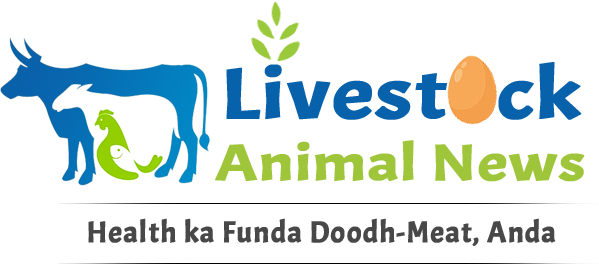Although India is number fifth in the world in animal feed production, it faces many short-term and long-term challenges. Neighbouring countries like Nepal and Bangladesh also buy feed ingredients from India. During 2023, India is expected to produce around 27 MMT poultry feed, 15 MMT cattle feed and 3 MMT aquaculture feed. Most of the raw materials required for animal feeds are produced in India. Indian feed sector imports many feed additives like amino acids, vitamins, enzymes, etc.
Grains and grain by products are used as source of energy and fibre in animal feeds. Government is expected to divert around 15 MMT of maize to ethanol production in next 2-3 years. Around 5 to 6 MMT of DDGS will be available as protein source for animal feeds. This will put strain on maize prices. Small amount of maize is also exported from India. Government should divert land under rice and wheat towards maize production to produce around 50 to 60 MMT, which will meet needs of feed, food, ethanol and export sectors. Government banned exports of broken rice and DORB. Millets prices are higher than maize in last few years, making it unviable to use in animal feeds.
Soybean meal is main protein source in poultry feeds. Two years back, government had allowed imports of soybean meal for limited period to control prices. In future also, government may allow imports if needed. There is need to increase area and yield of not only soybeans but all other oilseeds as well. It will be win-win situation. Our edible oil imports will go down if we produce more oilseeds. We can always export surplus oilseed meals.
FSSAI directed all cattle feed millers in India to use Bureau of Indian standards (BIS) standards to control aflatoxin residues in milk and milk products. But penetration of cattle feeds is only 15%. How government will control aflatoxin coming from green and dry fodders and concenrates fed directly to cattle in India? Fodder production and yield should go up in coming years. Silage making should be promoted. Dry fodder should be available at right price throughout the year. There is need of animal feed and fodder policy to secure feed and fodder availability to our livestock. Ration balancing should be promoted among farmers. Many startups are working in this area.
There is need to enhance efficiency of available feed resource use. This information would be of immense use for policy-makers, government agencies, non-government organizations, intergovernmental agencies and development agencies, among others in formulating and implementing sustainable livestock development activities and in preparing and coping with climatic variations such as droughts, floods, severe winter weather events and global climate change.There is need to integrate quality control system in feed analysis. NIR can play important role to know chemical composition of feed ingredients. Scientists and feed industries must ensure that the quality control systems and good laboratory practices are used in feed analysis laboratories.
In south Asia, ruminant production is largely based on feeding of crop residues and agro-industrial by-products. However, these resources need to be properly managed. Straw worth millions of dollars is burned every year causing environmental problems and soil degradation, in addition to loss of this valuable feed resource. Crop residue management could include the use of balers for collection of straw from the field, followed by the use of processing technologies for the manufacture of balanced complete feed for ruminants. The technology for making densified total mixed ration blocks (DTMRBs) or densified total mixed ration pellets (DTMRPs) based on straw and oilseed meals is an innovative approach, which provides an opportunity for feed manufacturers and entrepreneurs to remove regional disparities in feed availability and to supply the balanced feed to dairy and other livestock farmers on a large scale. It can also be effective in disaster management and emergency situations. Other technologies, such as chopping of forages, increase animal productivity and reduce waste of forage. Substantial feed losses in south Asian countries can be prevented by using proper postharvest technologies.
There is also need to tap new feed resources. Scientists have done studies on many unconventional raw materials but their availability and safety is more important. Some insects such as the black soldier fly, maggots (larvae of the housefly), yellow mealworm, silkworms and grasshoppers are also good sources of protein and macro-and microminerals. The protein content of insects could range from 40 to 60 per cent on a dry matter basis, with protein quality as good as muscle protein. They are also good sources of iron, zinc, vitamin A and polyunsaturated fatty acids; and have been found to be good feed ingredients for poultry and pig diets.
Area specific mineral mixtures should be fed to our animals. Deficiency of minerals such as Co, Mo, Mg, Zn, Na, Cl etc. could decrease rumen fermentation because these are vital for various activities of rumen microbes.
We should understand that animal diets have the same importance for animals as human diets have for humans. Animal nutrition must get due attention, especially at the policy level. Animal feeding will prove to be the foundation of efficient livestock production in south Asia.

















Leave a comment